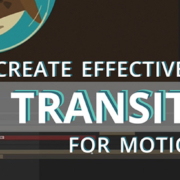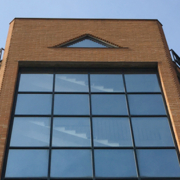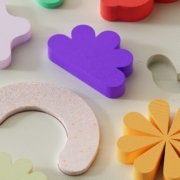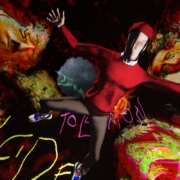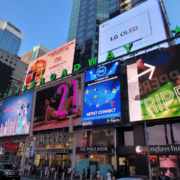10 Animation quick tips for the aspiring motion designers
You love animation, and using After Effects is your bread and butter. You are an aspiring freelance motion designer, and yes, you are good at animating, but maybe you feel your animations miss something.
In the following article, I will share tips and critical aspects that can help you enhance your animations and take them “to the next level.”
1_Learn to manage the “graph editor”
2_Use animation principles, wisely
3_The fewer keyframes (usually), the better
4_Learn how to “match cut” perfectly
5_Do not just ease
6_Go with the (music) flow
7_Bounce them all
8_Motivate your movements
9_Separate the dimensions
10_Observe how things move
1_Learn to manage the “graph editor”
The first piece of advice to animate effectively in After Effects is to learn to use the graph editor, and I do not intend the speed graph editor but the value one!
If you want to become an absolute master in moving objects through the timeline is crucial that you understand reading and managing curves in the value graph editor.
Your animations will gain a new level of control and uniqueness!
2_Use animation principles, wisely
Hey, I bet everyone in the animation industry has heard about the famous animation principles!
We all like them, but, in my opinion, you do not have to take them as something you must use whenever you are animating.
Animation principles are fundamentals, and Disney animators wrote them. That is why they related to a “cartoony style,” full of exaggeration and everything that makes Disney cartoons almost perfect!
In your career as a motion designer, you must know those principles.
You can manage them within your preferred animation software but be aware that they are ingredients you must choose and balance to cook your following perfect animation!
3_The fewer keyframes (usually), the better
When you are animating something, try to keep the numbers of keyframes as low as possible, it is usually better!
Managing a low number of keyframes is more functional when you have to modify and tweak your animation. Also, the blending between keyframes works better if they are less.
A path with a keyframe every 3 frames usually will not look very smooth!
4_Learn how to “match cut” perfectly
Transitions are one of the most fascinating and spectacular things we see in many motion design pieces.
They usually morph between objects and worlds, leaving us surprised.
I have bad news for you: crafting those transitions needs time and time to master! But I also have good news: a type of transition is becoming very popular, which is very effective, called “Match cut.”
The match cut is usually a “cut on action”:
If you have to cut from one scene to another, try to cut the first scene when the hero object is reaching his maximum speed in time and cut to the second scene when the hero element of the second scene is going from his full speed in time, to his final position.
If you want to add something extra, try to use the secondary motion or other elements in the scene to reinforce the movement of the “hero object” leading the two scenes.
5_Do not just ease
We all know that “easy ease” is the most used and common way to animate the movement of an object!
But try to scratch the surface: use a different setting than the default values and pose yourself a fundamental question:
does this object need to start moving fast or slow, or does it needs to start slow and end quickly?
Is it affected by acceleration or deceleration?
6_Go with the (music) flow
Great animations and pieces of music have their flow and rhythm.
On your next project, try to find and influence the flow of your animation; music can help you find it!
Another thing to consider is that the human brain always tries to balance things. For example, if your scene moves toward the left, your next scene could move towards the right!
Counter the movements and break the flow when you want to highlight something or create a particular moment!
7_Bounce them all
In your career as a freelance motion designer, it is 99.9% sure that once you have to animate a bounce, it is better for you if you animate it correctly!
Animate a bounce correctly is more complex than you expect if you do not know to do it right!
You must understand and manage the graph editor correctly if your bounce looks naturally engaging!
When I want to understand the level of a motion designer, I look for a bounce animation in his works or showreel, giving me a quick and clear idea of his level in animation.
8_Motivate your movements
A clever way to animate objects is to motivate their movements!
Try to think of your animations as consequences of the energy of another object. If your object touches another thing briefly, that is probably the right time for the second object to move!
The result will be a more organic animation that will please the viewer!
9_Separate the dimensions
By default, the three dimensions X, Y, and Z refer to a single keyframe in After Effects.
If you want more control and more professional and detailed management of the individual axis, right-click on the “position propriety” and click “separate dimensions.”
By doing so, you will get extra control over the single axis using the value graph editor.
You can manage the movement of every single axis more precisely, generating just the keyframes you need!
10_Observe how things move
A crucial aspect a motion designer has to develop is learning to observe things.
To re-create realistic and engaging animations, you must know how they work in reality!
When you see something that moves excitingly, try to break down its movement and analyze how the speed and weight of the object are working.
Example:
I have a dog that walks strangely; his nickname is “the dancer” because he seems to jump on his feet slightly.
Once, I had to animate a cartoony deer in After Effects, and I didn’t want to start rigging a quadruped and get into a realistic animation. Instead, I decided to emulate how my dog moves and jumps on his feet!
By translating a simplified version of the natural dog movements to the cartoony deers, the result was enjoyable and functional, and It also took me less time than expected!
I was being able to observe how my dog moves, which resulted in a clever and functional animation for a freelance job!

